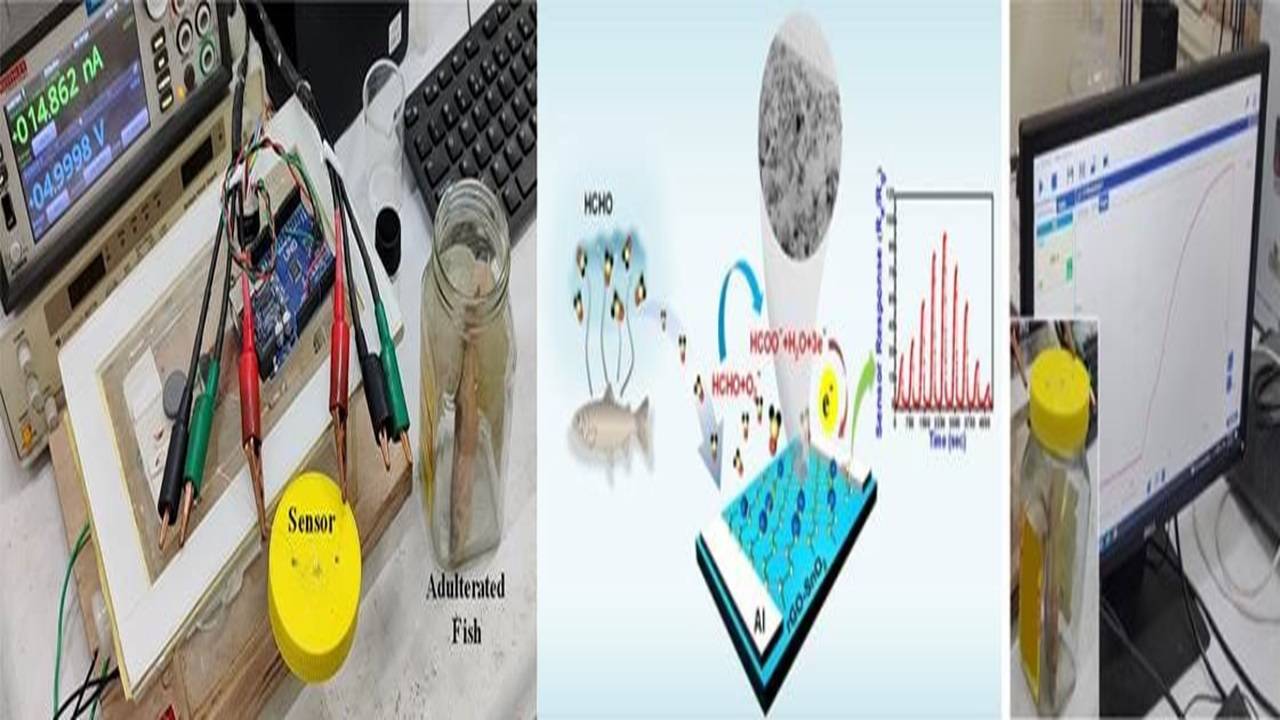
A low-cost sensor utilizing a composite of metal oxide nanoparticles and graphene oxide has been engineered to detect the presence of formalin in fish without causing any harm to it. This sensor boasts extended stability and impressively low detection limits.
The adulteration of food products with illegal or hazardous substances to enhance their appeal or prolong their shelf life has been a concern for the country. Formaldehyde, a colorless and sharp-smelling gas, is frequently used in industrial processes, notably as a preservative in certain foods, particularly fish in developing nations. However, its use in food is prohibited in numerous countries due to its carcinogenic nature, capable of inducing cancer.
There are existing commercial sensors for detecting formalin in fish like electrochemical or colorimetric methods. While electrochemical sensors are effective, they tend to be not very cost-effective, while colorimetric sensors, though less expensive, often struggle with low-level detection and selectivity issues. The emergence of 2D material-based gas sensors has introduced a novel approach for efficiently identifying toxic vapors, like formalin, emitted from adulterated food items.
Led by Dr. Hemen Kumar Kalita, the Nanomaterials and Nanoelectronics Laboratory at Gauhati University in Assam has developed this cost-effective formalin sensor. This sensor, using a tin oxide-reduced graphene oxide composite, demonstrates remarkable efficacy in identifying formalin in adulterated fish samples.
Graphene oxide (GO), known for its high solution processability, was combined with tin oxide (SnO2) to create the composite (rGO-SnO2). Tin oxide's stability and sensitivity to low formaldehyde concentrations make it a promising candidate when integrated with graphene.
Synthesizing graphene oxide through a wet chemical approach and subsequently employing a hydrothermal route followed by calcination, the researchers successfully developed the tin oxide-reduced graphene oxide composite.
Testing conducted both in the laboratory and fish markets of the Guwahati region affirmed the sensor's ability to detect formalin in various fish samples, including those imported from outside Assam.
















